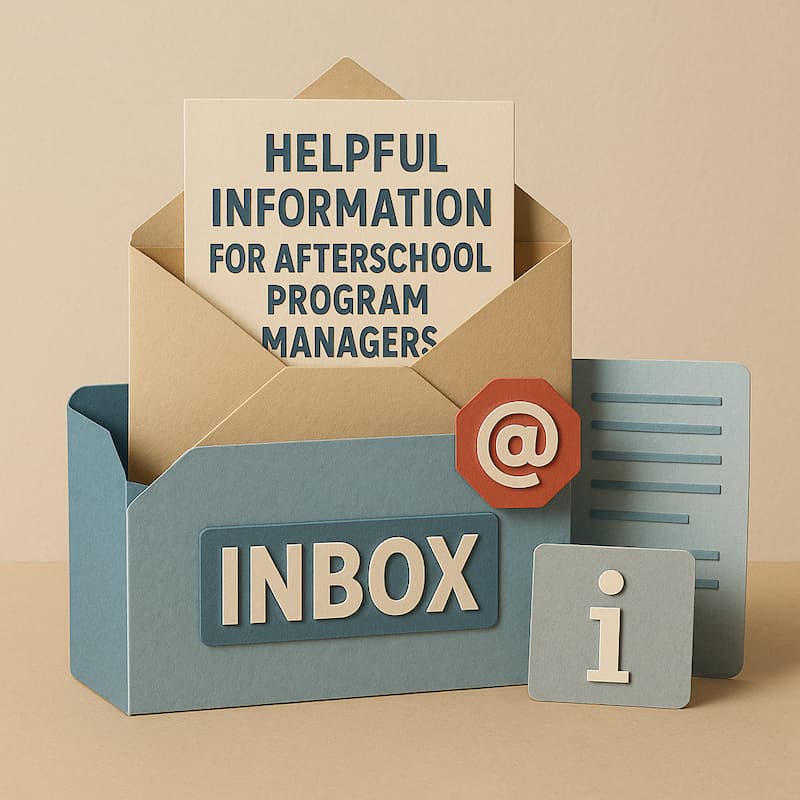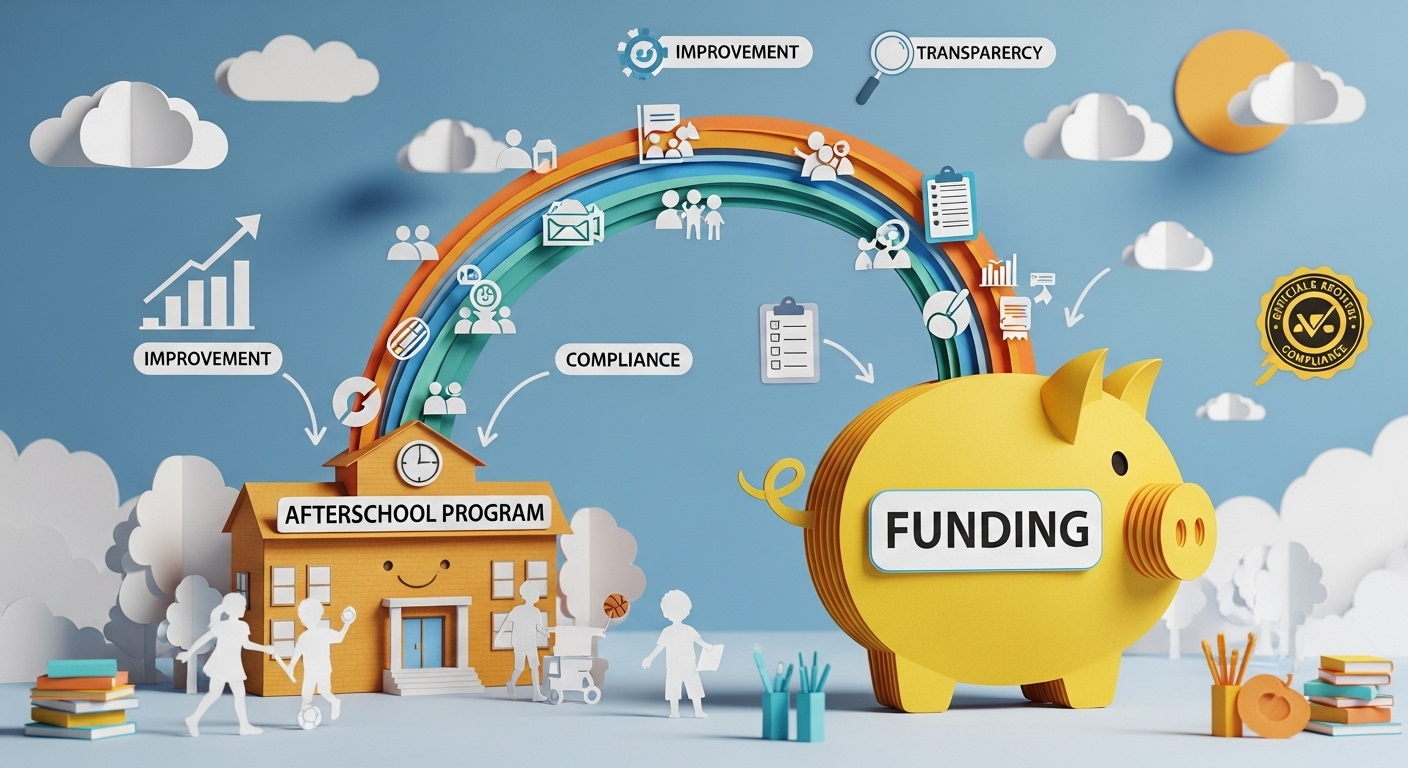
Understanding the latest updates to the ELOP grant applications
The California Expanded Learning Opportunities Program (known as "ELO-P" or "elop") have evolved over the last few years. If your district has been operating under older guidelines, make sure to review the changes from the March 2021, Early 2024, and November 2024 versions.
The program is still committed to expanded learning for students in transitional kindergarten through sixth grade. And, unlike competitive grants like ASES, ELO-P still provides formula-based funding allocated directly to eligible school districts and charter schools.
Beginning with the 2025-26 school year, every eligible local educational agency must explicitly declare whether they will participate in the program or opt out. To receive ELO-P funds, your district must develop or update an ELO-P program plan that meets the latest requirements.
Understanding How ELO-P Has Evolved
From our perspective the ELO-P grant application and program requirements have matured since the program's inception in 2021. Guidelines that were once flexible are now stricter. There's more of a focus on integrated operation of multiple funding sources. And, as part of an effort to show impact, there's more requirements around data collection. Administrators who are aware of these changes are in a better spot to create more successful applications and implement more effective programs.
From Funding Allocation to Comprehensive Programming
The March 2021 version of the ELO-P grant plan template primarily focused on funding allocation and expenditure tracking, with clear budget categories for supplemental instruction, student supports, and community learning hubs. This initial framework was heavily influenced by pandemic recovery efforts.
By 2024, the program guide had expanded to include much more detailed programmatic requirements. The current November 2024 guide provides comprehensive information on quality standards, staff qualifications, and program evaluation expectations. This evolution reflects a shift from simply extending instructional time to creating true expanded learning opportunities with enrichment activities.
Key Changes to Be Aware Of
When preparing your ELO-P grant application, pay attention to these recent requirements:
- Nine-Hour Requirement EvolutionThe March 2021 version of the ELO-P guidelines primarily focused on extending funding without mandating structured schedules. By early 2024, a nine-hour requirement was introduced, although enforcement was somewhat vague. However, the November 2024 version strictly enforces this requirement, necessitating mandatory detailed sample schedules to demonstrate compliance. This includes ensuring at least nine hours per day on school days and a minimum of 30 non-school days per year with nine-hour expanded learning sessions. The guidelines also provide clear instructions on how recess, meals, and expanded learning time contribute to the total required hours.
- Integration with Other Funding ProgramsPreviously, districts had the flexibility to manage the After School Education and Safety (ASES) program and the 21st Century Community Learning Centers independently. However, the November 2024 guidelines have introduced a significant change, requiring full integration of these programs with ELO-P. This means that all three programs must now operate as a single, unified initiative. Consequently, each school site must adhere to the most stringent requirements across all programs. For districts that previously managed these programs separately, the ELO-P plan must now clearly demonstrate complete consolidation, ensuring a seamless and cohesive approach to delivering expanded learning opportunities.
- Field Trips & Off-Site LearningEarlier versions of the guidelines provided minimal instructions regarding off-site activities. However, the November 2024 guidelines have introduced strict rules to ensure these activities are aligned with educational objectives. Educational field trips are now permitted only if they are directly tied to academic or enrichment goals, with purely recreational trips being prohibited. Additionally, off-site locations must have comprehensive transportation and safety plans in place. Your application must clearly document how these activities support educational objectives, ensuring that they contribute meaningfully to the expanded learning opportunities offered by the program.
- Staff Training & Qualification RequirementsThe program has evolved significantly from having general staffing requirements to demanding specific qualifications. Current guidelines mandate that staff undergo professional development, allowing up to three program closure days specifically for training purposes. Additionally, there is a strict requirement for mandatory health and safety screenings for all staff members. Furthermore, staff must meet minimum instructional aide qualifications. Review your applications approach to staff development and be sure to outline your hiring standards to align with these guidelines.
- Data Collection for Continuous Quality ImprovementThe March 2021 guidelines did not include any explicit Continuous Quality Improvement (CQI) requirements. By early 2024, there was a suggestion for voluntary data collection to support program development. However, the November 2024 version mandates a more rigorous approach, requiring the collection of social, behavioral, and skill development data. This data must be systematically tracked, analyzed, and reported to ensure compliance with the program's objectives. As part of your ELO-P plan, specify the methodology you will use for data collection to align with these requirements.
- Budget & Fee Compliance RulesThe focus of the ELO-P program has shifted from general funding allocations to a stronger emphasis on strict compliance. Current requirements mandate that school districts conduct mandatory budget audits to ensure that they are in full compliance with the program's financial guidelines. Additionally, the program has introduced fee structures that incorporate sliding-scale models to accommodate various income levels. Importantly, there are automatic fee waivers in place for low-income families, ensuring that financial barriers do not prevent access to the program.
Core Components of the ELO-P Application
Regardless of the evolving requirements, successful ELO-P applications consistently address these core elements below. Here's a quick primer on the application:
1. Program Structure and Quality Standards
The biggest change in application questions was from 2021 to 2024. While the requirements have been refined from earlier in the year to the November 2024 version, the main areas of focus remain essentially the same:
- Safe and supportive environment - The information on your program's location, whether on-site or off-campus, and the steps you'll take to ensure a secure, nurturing environment.
- Active and engaged learning - Details on how your program will keep students actively involved in learning.
- Skill-building opportunities - The range of skill-building opportunities that contribute to students' overall development
- Youth voice and leadership - How your program will empower students by giving them a voice and leadership opportunities.
- Healthy choices and behaviors - Your plans for nutritious meals/snacks and activities that encourage healthy lifestyles.
- Diversity, access, and equity - Strategies that address cultural and linguistic diversity, including those with disabilities.
- Quality staff and partnerships - How you'll recruit, train, and retain high-quality staff to work with students in your program.
- Clear vision, mission, and purpose - What you're trying to achieve and how it aligns with broader educational goals.
- Continuous quality improvement - Your systematic approach to gathering feedback and making enhancements.
- Effective program management - Your plan for day-to-day operations, including staffing, scheduling, and resource management.
2. Meeting the Needs of Diverse Student Populations
A compelling ELO-P application emphasizes how your program will assist pupils with different needs:
- For English learners: Describe language support strategies that replicate learning activities from the instructional day
- For foster youth and students in foster care: Detail social-emotional supports and consistent relationships
- For students from working families: Emphasize your full-day coverage and attendance strategies
3. Community Partnerships
Strong applications demonstrate meaningful collaboration with community partners. Detail how your school community will work together, perhaps bringing in local organizations to provide specialized enrichment activities. Explain how these partnerships enhance your expanded learning opportunities without duplicating efforts.
4. Staffing Approach
Your ELO-P plan should explain your staffing approach, whether hiring literacy coaches, high-dosage tutors, or school counselors to support your program. Show how staff training aligns with providing pupil-centered, engaging learning experiences. Remember to address the required student-to-staff ratios (including the 10:1 ratio for transitional kindergarten and other grades kindergarten students).
5. Budget Alignment
Demonstrate how your ELO-P funds will be allocated to support program goals. While ELO-P is formula-based, you still need to show thoughtful budgeting across:
- Staff compensation
- Materials and supplies
- Training and professional development
- Program evaluation
- Support services
Additional Tips
Beyond the application process, consider these practical strategies for successful implementation:
Summer and Intersession Programming
Your ELO-P plan must include at least 30 days of non-school day programming. Successful summer school enrichment programs typically:
- Focus on project-based learning rather than remediation
- Incorporate field trips and community exploration
- Build in both academic support and enrichment activities
- Maintain consistent staffing between school year and summer programs
Supporting Remote and Small Schools
If your district includes remote classified schools, your ELO-P application should address transportation challenges and staffing for these sites. Consider creative solutions like combined grade programming or partnerships with other nearby providers.
Avoiding Common Issues with ELO-P Applications
Many well-intentioned ELO-P applications fall short due to:
- Misalignment between identified student needs and proposed solutions
- Lack of detail regarding how the nine-hour day will be structured
- Insufficient planning for summer and intersession components
- Unrealistic staffing projections that don't account for required ratios
- Failure to demonstrate how you'll track attendance and program outcomes
- Missing components required by the current program guidelines
Embracing the Changes
As California's expanded learning program continues to evolve, staying current with ELO-P programming requirements is obviously important for school district administrators. As the program matured from a primarily funding-focused initiative to a comprehensive framework for quality expanded learning, it's pushing districts to not only secure funding but to build programs that truly benefit your students.
For a more in depth look at completing the application, read our California ELOP Grant Application Question Analysis. We analyzed 11 ELOP grant applications from diverse California districts, identifying common themes and effective approaches in successful submissions. Check out our findings that highlighted unique responses that stood out and were particularly effective. These insights offer guidance on what state application reviewers are likely expecting to see in a strong ELOP application.






